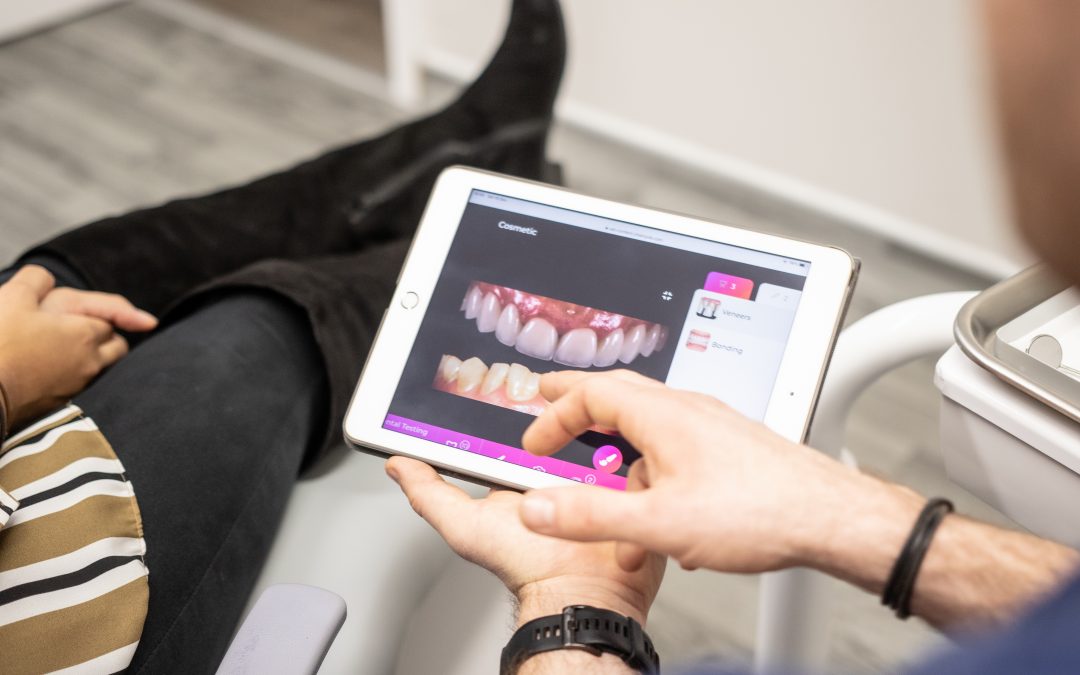
A new era of patient communication
Dentistry has seen various changes through time. The last year has been no exception with the COVID-19 global pandemic sparking various arguments and opinions about the way that day-to-day practice is run.
Something that hasn’t changed is the core principle of the patient experience.
As practices we try our best to make the patient journey as warm and comfortable as feasible. We do this through friendly reception staff to inviting waiting rooms. Follow up with a treatment coordinator to close the ‘loop’.
Arguably the most important aspect of this is the quality of the time that we spend with patients.
Introducing Chairsyde
During its beta testing phase, which I was lucky to be a part of, Chairsyde came about as a concept whereby one could educate the patients visually. This aspect has only been enhanced over time through its cloud-based desktop approach, with additional features such as the hugely relevant teledentistry and the risk mitigation tracking elements.
It seems to raise the question as to why it wasn’t available before.
Chairsyde allows for the demonstration to a patient whilst in surgery or remotely. We can assess the condition that they have, the potential sequelae of the condition and how it can be treated through a variety of options, all whilst tracking everything that is shown.
Verbally we can present the patients’ condition. But this falls short despite our best efforts using layman’s terms, analogies and various formations of our hands to explain what is intended.
Visually we can sketch rough diagrams to improve the patients’ understanding. But it is not an accurate reflection at all times and therefore isn’t as easy for a patient to comprehend as previously thought.
Chairsyde takes this step effortlessly. It allows us to show patients animations and images alongside the ability to annotate them directly. Thus tailoring to a patient’s individual requirements.
All this without reaching for a pen or bringing out one of the many model’s practices have to store away in the drawers since COVID-19 guidance came in.
A picture paints a thousand words
When showing the education content to a patient, a wonderful eureka moment occurs. It all ‘clicks’ for the patient and the age-old saying: ‘A picture paints a thousand words holds true.
This applies to all patients, young and old. It seems to carry the advantage of completing their understanding. No matter how many attempts we previously make to educate them by other means.
Patients draw to this technology. They buy into the passion with which the clinician explains the process, which you can note by the visible response on the patient’s face.
This is no surprise as Chairsyde covers 95% of patients’ learning styles with 30% auditory and 65% visual. What is tirelessly demonstrated over multiple visits over the years suddenly hits home with the patient within seconds through this wonderful education suite.
In a world driven by a hunger for instant information, Chairsyde more than delivers this in real-time. It effectively improves the patient understanding of their condition, allowing them to make an informed decision.
Enhancing patient experiences
Furthermore, Chairsyde can also create a summary email in a matter of a few quick clicks. This allows patients to refresh themselves of the discussions that took place.
In summary, the patient has a consultation raising a concern, they understand the problem, the treatment options available to them and they also leave with an email giving them the information. All through a cloud-based software.
What initially may seem another modern quirky platform, fast becomes an essential part of daily practice. I would urge others to try Chairsyde and experience it for themselves.
We endeavour to continuously develop areas of our practices. I feel Chairsyde plays a vital role that returns us to the forefront of what we are trying to achieve; enhanced patient experiences.


Recent Comments